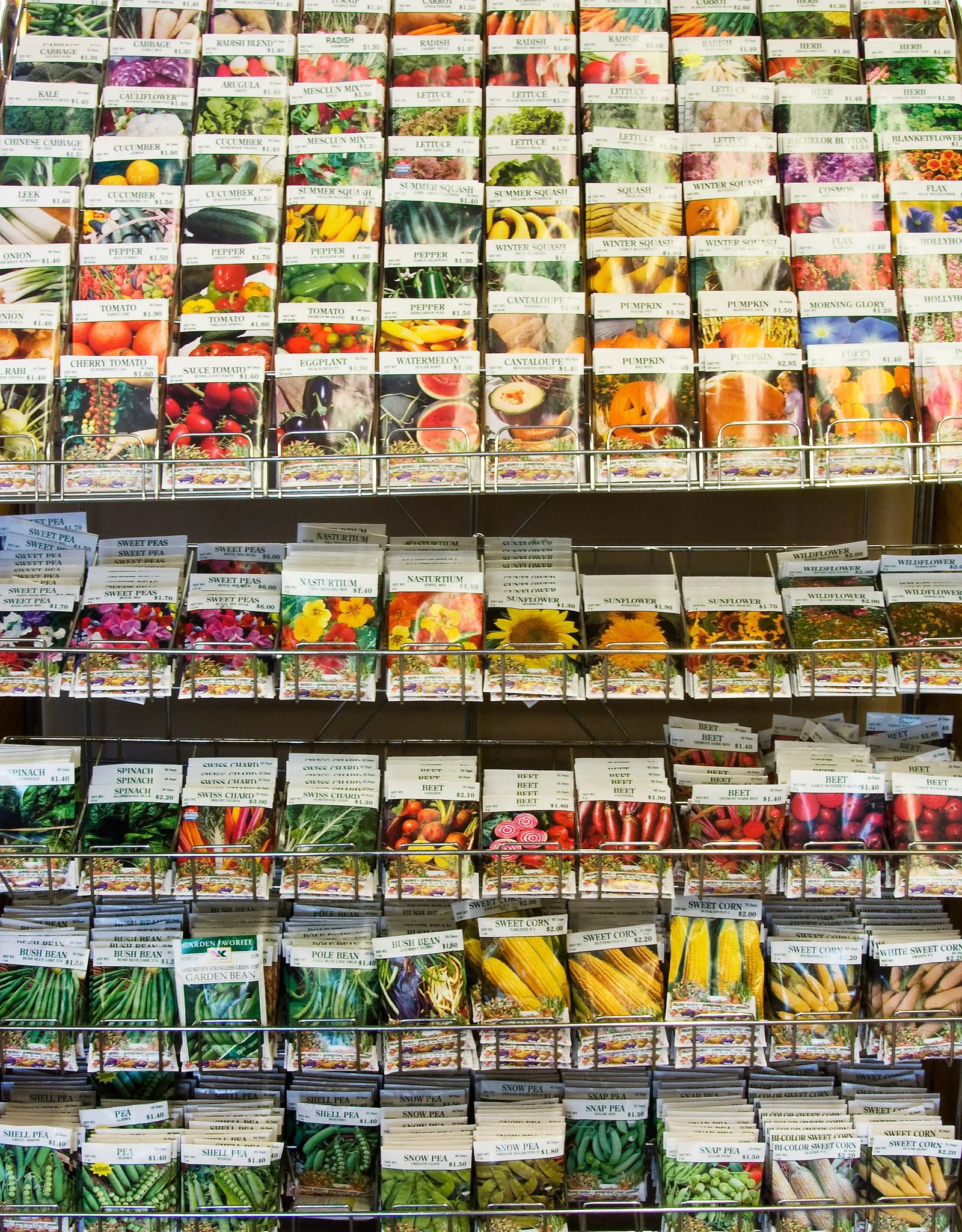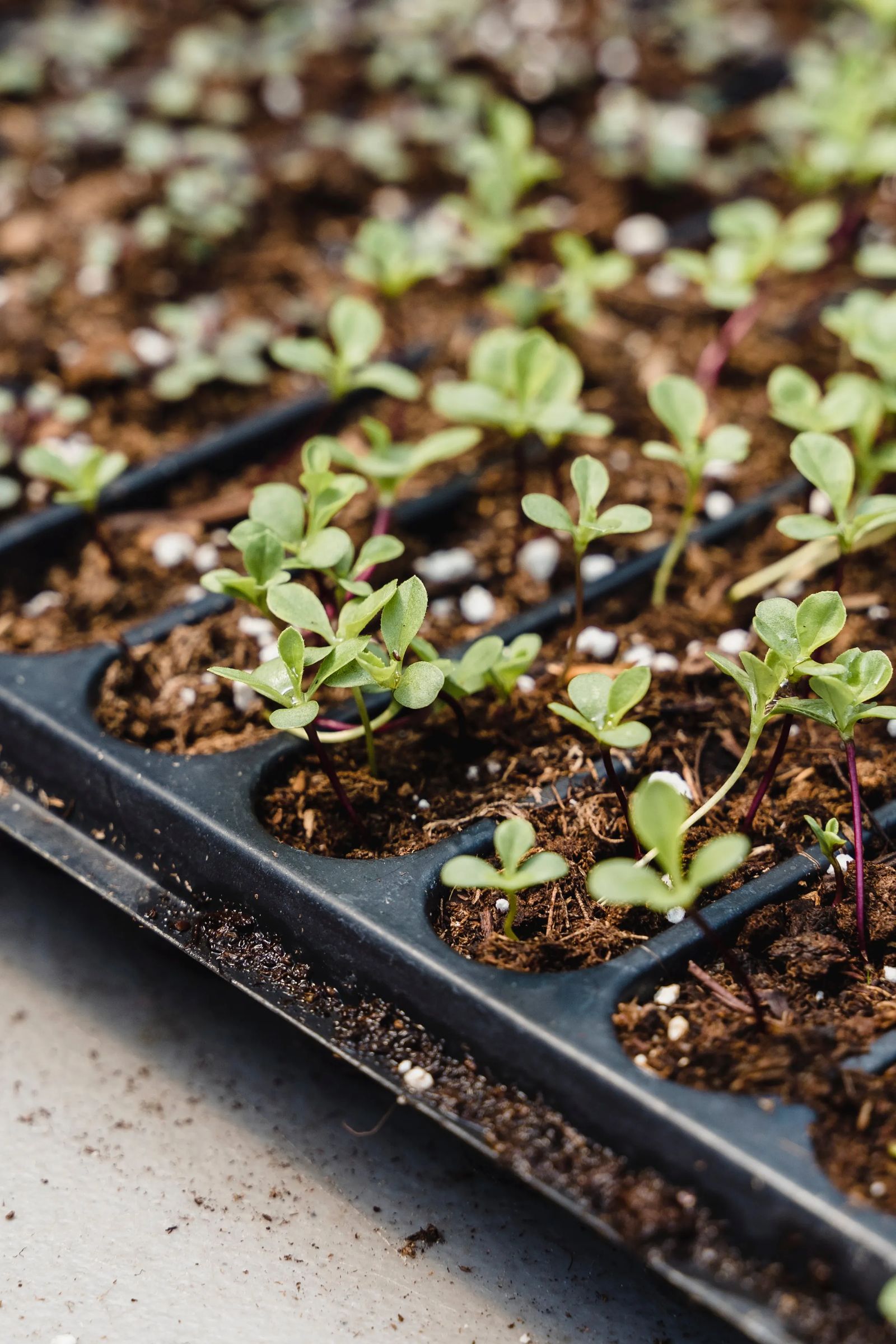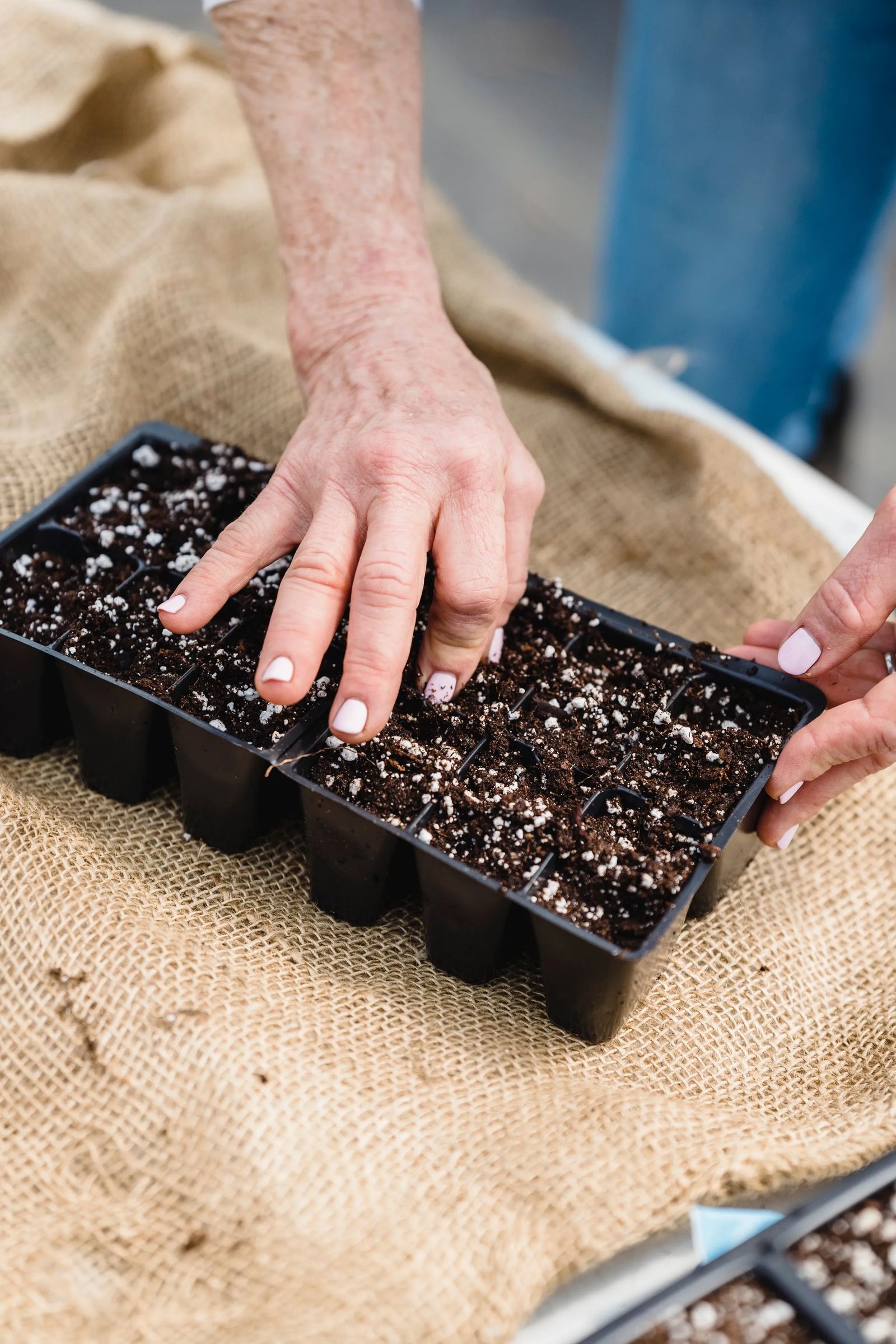
start thinking about those seeds
Sprout indoors, plant later, think now!
From the Experts at Gainans
What can you do when you’re ready to start gardening, but it’s too soon? Take this time to make a plan and get a head start by starting some seeds indoors!
TIMING IS EVERYTHING
The proper time for starting seeds depends on when the plants can safely be moved outdoors. As a general rule, seeds need to be started four to six weeks before the date of the last frost. Seed starting times are calculated by taking the date of the last frost and subtracting the days until transplant. The seed packet will tell you how many weeks.
The average date of the last killing frost in the Billings area is May 15. This is the safest, earliest date to plant outside. However, many experienced gardeners of the area wait until Memorial Day to be safe and still keep an eye on the weather and nighttime temperatures. As Montanans know, our weather is unpredictable.

SELECTING SEEDS FOR PLANTING
For best results, buy quality seed from a reliable dealer. Seeds sold in packages should show crop, variety, germination, percentage and chemical seed treatments, if any. Keep seeds dry and cool to insure good germination at planting. Any unused seed packets can be stored in a tightly closed jar and kept in a dry, cool area. Do not allow the seeds to freeze.
Many new vegetable and flower seeds are hybrids. Hybrids usually have increased vigor, better uniformity and production, and sometimes specific disease resistance or other unique cultural characteristics. Heirloom seeds are also available. They contain no genetically-modified genes.
The beginner should start out with a few easily-grown-from-seed plants such as marigolds or tomatoes. Growing these plants from seed will give you basic seed-starting skills. In the following years, you can increase your expertise by planting a larger variety of seeds that have increased difficulty levels.

CONTAINERS
Containers for starting seeds should be clean, sturdy and fit into the space available for growing plants in the home. The proper container helps get seedlings off to a good start and may save work in later stages of development. Remember to punch holes for drainage in any container that will hold water.
Plastic pots can be sanitized, reused and provide excellent containers for transplants. If larger numbers of seeds are going to be started, use traditional plastic growing flats. They are a standard in horticulture, so many types of inserts and pots will fit the tray.
Coco Coir pots are popular pots made from coconut fiber. They are porous and provide excellent drainage and air movement. The entire pot can be planted, so there is minimum root disturbance at planting time.
Compressed peat pellets are expandable and when placed in water swell to form a cylindrical container filled with peat moss, ready for seeding or transplanting. They may be planted directly into the garden. Place the pellets in watertight trays so they are easily watered and held upright.
GROWING MEDIA
The soil, or medium, used for starting seeds should be loose, well-drained and fine-textured. Garden centers carry a variety of such mediums — look for labels that say "seed starter mix" or natural organic coconut cork fiber. Prepared mixtures are ready to use immediately. Your objective is a soil that will drain easily, yet still retain moisture.

PLANTING
Fill the container up to ¾ inch from the top with the planting medium. Moisten before filling if it is dry. Make sure the container has adequate drainage. If the container is made of fiber or peat, it must be watered thoroughly before medium is placed in it. Otherwise it will act as a wick and pull moisture out of the medium later.
Level and gently firm the planting medium. Sow the seeds uniformly. Some seeds are large enough to easily plant individually. Sowing very small seeds can be difficult. It is far too easy to sow them thickly, because they cannot be handled individually. A simple way is to begin by spilling the seeds into a shallow container, such as the lid of a jar. Then pick up a tiny pinch and drop a trail of seeds across the planting medium by rubbing the finger and thumb together as the hand moves across the surface.
Sow large seeds such as cucumber, cantaloupe and watermelon directly into peat or coco coir pots. Plant two to three seeds per pot and later thin to one plant. This saves later transplanting and means less root damage at planting time.
Cover the seeds with dry seedling mix. The depth of covering depends on the size of the seeds. Moisten the surface with a fine mist, or place the container into a pan of warm water, allowing the medium to absorb the water upwards. Buy standard flats without holes. Use these flats underneath the flats or pots with holes that were used for planting. Cover the planting medium with plastic grow-domes to hold in moisture. Complete germination stations and mini hot houses are available.
Place the seeds in a warm location for germination. Generally a temperature range from 65 to 75 degrees F is best. Do not place covered containers in direct sunlight. To keep soil warm use a germination seedling heat mat. Watch daily for germination. When seedlings appear, move containers to bright light. Remove the plastic dome when germination is well under way. Do this gradually. Prop open the plastic dome for a day or two before removing completely. Seed containers must not be allowed to dry out. Seeds are quickly killed if allowed to dry during germination.
GROWING SEEDLINGS
After seeds have germinated, promptly give the best possible growing conditions to ensure stocky vigorous plants for outdoor planting.
Light — Seedlings must receive bright light promptly after germination. Place them in a bright, south window if possible. If a large, bright window is not available, place the flats under grow lights.
Temperature — Most annual plants and vegetables prefer night temperatures between 60 and 65 degrees. Day temperatures may run about 10 degrees higher. If temperatures are warmer than these, the plants may get leggy (tall and thin). Cool season vegetable crops and a few flowers prefer night temperatures no higher than 55 degrees and day temperatures near 65. An unused bedroom, basement or sun porch is often a good location.
Moisture — Keep flats moist at all times but never soggy. Let the surface of the soil medium dry out between watering, but do not allow seedlings to wilt at any time. Seedlings should never go through the night with wet leaves. This will lead to disease problems.
Fertilization — Seedlings will need some fertilization for best development. Use a soluble plant fertilizer. Young, tender seedlings are easily damaged by too much fertilizer. Apply fertilizer at about half recommended strength a few days after seedlings have germinated. After that, fertilize at two-week intervals with the dilution recommended by the manufacturer.

TRANSPLANTING
When seedlings have developed at least one set of true leaves and are large enough to handle, transplant to individual pots or space out in flats. Failure to transplant promptly results in crowded, spindly seedlings that may not be able to develop properly.
MOVING PLANTS OUTDOORS
Plants that have been growing indoors cannot be planted abruptly into the garden without injury. To prevent any damage, they should be "hardened off" before planting outdoors. This is the adjustment period between the growing condition inside and the growing condition outside.
This process should be begun at least two weeks before planting in the garden. If possible, plants should be moved to cooler temperatures outdoors in a shady location. When first putting the seedlings outdoors, keep in the shade. Gradually move plants into sunlight for short periods each day. Gradually increase the length of exposure. Do not put tender seedlings outdoors on windy days or when temperature is below 45 degrees. After proper hardening, plant outdoors.
Plants grown in coir pots or peat pellets can be planted intact. Breaking up the base of the peat pot often helps improve root penetration and drainage. Thoroughly cover the top edges of the pot or break off the top edge to soil level. If this is not done, it will act as a wick and draw moisture from around the root ball. This delays root penetration or even causes the plant to dry up on hot sunny days.
Keep in mind, you'll want to try to transplant on a cloudy, overcast day if possible.









